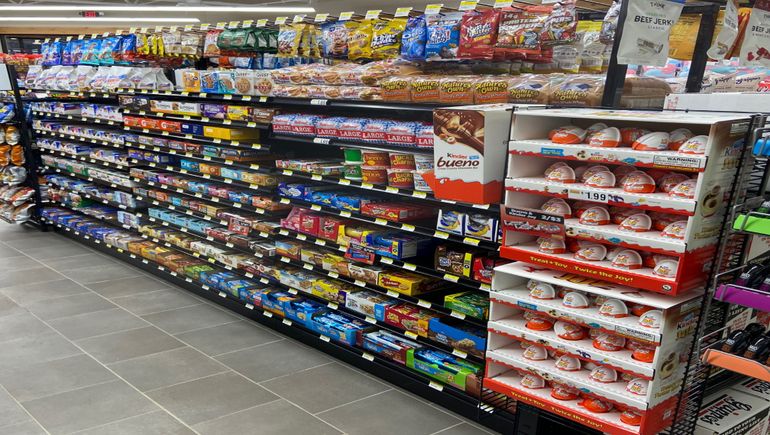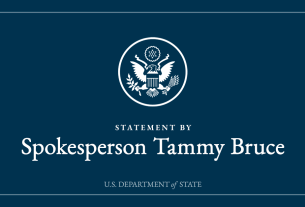C-store candy sales soared 12.2% to $7.5 billion in 2022, according to IRI and 210 Analytics, driven in large part by price inflation but also by growing enthusiasm from consumers looking to add a little indulgence to their lives. And experts predict continued strong growth this year.
The convenience channel is closing in on grocery as the top channel to buy candy, said Anne-Marie Roerink, principal of 210 Analytics, a marketing research firm focused on food retailing.
“It always was a strong category for convenience, but a few trends are driving even greater strength,” she said.
Overall chocolate sales grew 8.7% to $3.4 billion in 2022, according to IRI and 210 Analytics, while volume in non-chocolate candy boasted new records, increasing 15% to around $3 billion.
The gum/mints subcategory realized the largest sales hike at 16%, while unit sales rose 3.6%. Sugar-free chocolate sales rose 9.5%, while sugar-free diet candy rose 7.4% and sugarless gum sales skyrocketed 20.5%.
Notably, c-stores are seeing an increase in household penetration, an increase in trips and a hike in dollars per trip, according to Roerink.
“That’s what we call the growth trifecta: more people buying, buying more often and spending more per trip,” she said. “It’s not often that you see all three levers of growth increasing. In fact, most channels and categories have seen decreases in household penetration, so this is quite telling for the success of confectionery in convenience stores.”
While inflation is pushing up dollar sales, there are several other reasons for candy’s growth, including its relative affordability, Americans’ increased snacking and millennials’ increased spending at c-stores.
Chocolate bars led all candy sales in 2022, surging 19.7% to $2.8 billion in c-stores.
Scott Olson via Getty Images
However, while there is significant growth of candy at c-stores, overall unit sales fell 1.8% last year. Unit sales in chocolate plummeted 5% while non-chocolate unit sales dipped slightly.
Continued supply chain problems, including the high cost and unavailability of ingredients, as well as transportation issues, could hamper growth — at least for the first half of the year, according to Roerink.
“We are starting to see some improvement, but I doubt the issues will be fully resolved in the first or second quarter of the year. That means that orders are rarely completely filled and retailers are left uncertain as to what will or will not be available, which makes promoting difficult,” she noted.
Here are the top reasons for candy’s success, along with tips to help operators maximize sales:
Affordable indulgence
At a lower price per unit, candy shines as an affordable treat as compared to items such as ice cream and baked goods, Roerink added.
“While consumers have pulled back on spending in reaction to inflation taking a bite out of their budget, they are still making room for little treats,” Roerink said. “This underscores that notion of affordability.”
Even with inflation, some shoppers feel they still deserve a treat while other large-ticket purchases and vacations are tabled because of financial concerns, said Jeff Lenard, vice president of strategic industry initiatives for NACS
While c-stores shine at retailing single-serve units of candy, unit sales for larger bags of chocolate have risen, “which shows that convenience stores can indeed play a role in the multi-occasion purchase while consumers save a little at the same time,” Roerink said.
Snack and candy sales are rising together
Due to COVID-19 forcing an increase in working from home, the desire to treat oneself and a variety of other reasons, 25% of Americans say they are snacking more, according to Acosta. Oftentimes, candy is used as a snack or bought in tandem with other snack products.
Around two-thirds (76.2%) of consumers said they snack two to three times a day, according to Knit’s 2022 Youth Snacking Trends Report.
The growth of remote work created two new “rush” periods where those working at home just wanted to get out of the house and talk to someone, according to Lenard.
“That created new opportunities for snack sales either in the mid morning or mid afternoon,” he said.

The pandemic has spurred new trip occasions that have benefitted the snack and candy categories.
Spencer Platt via Getty Images
Millennials have a golden sweet tooth
An increasing portion of candy sales is being driven by millennials, who “far over index” on shopping at c-stores compared to other demographic groups. As their share of total spending on food and beverages is gearing up, they are pushing more dollars into the convenience channel,” Roerink noted.
“This is particularly true for non-chocolate [candy], where both convenience stores and millennials over index,” she said.
“Younger customers frequent c-stores far more than older customers and they like to experiment with new flavors or LTOs,” Lenard confirmed. “This experimentation best fits in the c-store model where you can get in and out quickly and be on your way.”
Around 18% of millennials snack four to five times per day, versus 7.1% of Gen Zs, according to Knit. However, 78.6% of Gen Z customers prefer sweet snacks versus 73.3% of millennials.
Younger customers are far more likely to grab something sour than chocolate, according to Lenard. As a result, non-chocolate candy — which includes gummies and sour candies — accounted for nearly 19% of c-store candy sales in 2021, according to the NACS State of the Industry report for that year.
Innovation spurs sales
Candy manufacturers are continually releasing new flavors and textures to keep shoppers excited — including items that change flavors while eating them.
“Candy is one of the most innovative categories around the store,” said Roerink, adding, “The innovation we have seen in non-chocolate and gum has truly fueled that higher engagement, especially among millennials who love trying new candies. This is why many of the big candy manufacturers will launch new items in the convenience store channels for takeoff success.”
In addition to non-chocolate candies and gum, there have been new product rollouts utilizing premium chocolate and unexpected, fun flavor combinations, Roerink said.
Social media and sharing new and exciting candy or nostalgic candy have helped fuel innovation and “finding the next big thing,” according to Lenard. “But don’t forget that there is a reason that old favorites remain favorites,” he said. “Find a balance between the two.”
There is also continued innovation in specialty items, such as sugar-free, organic and natural colors. “At the end of the day, this is a small slice of the category, but a growing one,” Roerink said.
When considering plant-based and other candy options that are considered to be healthier, remember that “even individual customers have multiple personalities in their shopping behavior,” Lenard advised. “Someone who selects a ‘healthy’ snack earlier in the week might also be someone more likely to select something more indulgent as the week moves along.”
Lenard and Roerink predict continued growth in candy sales at c-stores in 2023. “I am quite optimistic for continued growth for confectionery, especially non-chocolate, gum and mints,” Roerink said. “Hard economic times never mean that people stop treating. We all want a little happiness that treats bring into our lives.”



